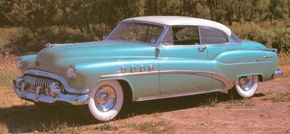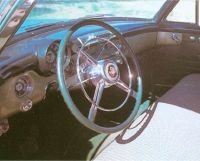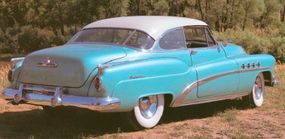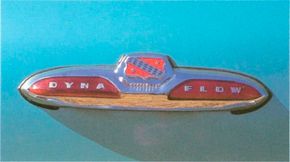"Valve-in-head, ahead in value." Buick's traditional slogan was still being touted in regard to the 1950-1952 Buick Roadmaster, although the rest of the industry (led by soul mates Cadillac and Oldsmobile) was finally coming around to the conclusion that overhead valves were going to replace side valves. Still, as recently as 1947, Chevrolet, Buick, and Nash had been the only major American producers to espouse the valve-in-head engine. By the mid-Sixties, everybody would be using it.
Advertisement
"Roadmaster" -- what a wonderful name for a car! It had emerged during 1936 and would last until it was foolishly removed for 1959. It was the perfect term for the top of the Buick line, a car bordering on Cadillac price territory, preferred transport for the up-and-coming professional -- the doctor, the lawyer, and anybody else who could not quite afford a Caddy.
Buick catered to this clientele with flashy styling-far and away the flashiest of the GM divisions-plus luxury and a host of novel design ideas: the famous pop-art grille, the gun-sight hood ornament, the hardtop convertible, the sweepspear, and the porthole. The latter three all arrived in 1949, when Buick sales correspondingly increased by 50 percent, and then doubled in 1950. In that long-lost halcyon era, this was the kind of car America wanted --and bought.
At a time when the annual model change was an act of faith, Buick chief designer Ned Nickles responded in the ordained manner by adding chrome, and the early-Fifties Buicks were not as purely beautiful as Ned's '49, the first all-new postwar design. The buck-tooth grille extended down over the bumper in 1950, but this was too strange even for Buickfolk (but much coveted today), and promptly receded in 1951.
Every account of Buick in those days invariably mentions the origin of the porthole, which -- variously bent, squeezed, elongated, wiped out, and restored again -- has been part of the Buick styling tradition since '49. It was part of that design lexicon, which took inspiration from the wonderful new jot aircraft (the basic Buick shape had evolved from the propeller-driven Lockheed P-38), along with the rounded "fuselage" of car body sides, the big scoop grilles, and the aileron-like tailfins. (Buick's first "fins" came in 1952, well ahead of Virgil Exner and Chrysler.) When Nickles whimsically mounted little colored lights inside the portholes of his own Roadmaster, wired through the distributor to flash in firing order, Flint managers stared at it wide-eyed in open admiration; the wonder is that they didn't make it standard.
For more information on cars, see:
- Classic Cars
- Muscle Cars
- Sports Cars
- Consumer Guide New Car Search
- Consumer Guide Used Car Search
Advertisement



